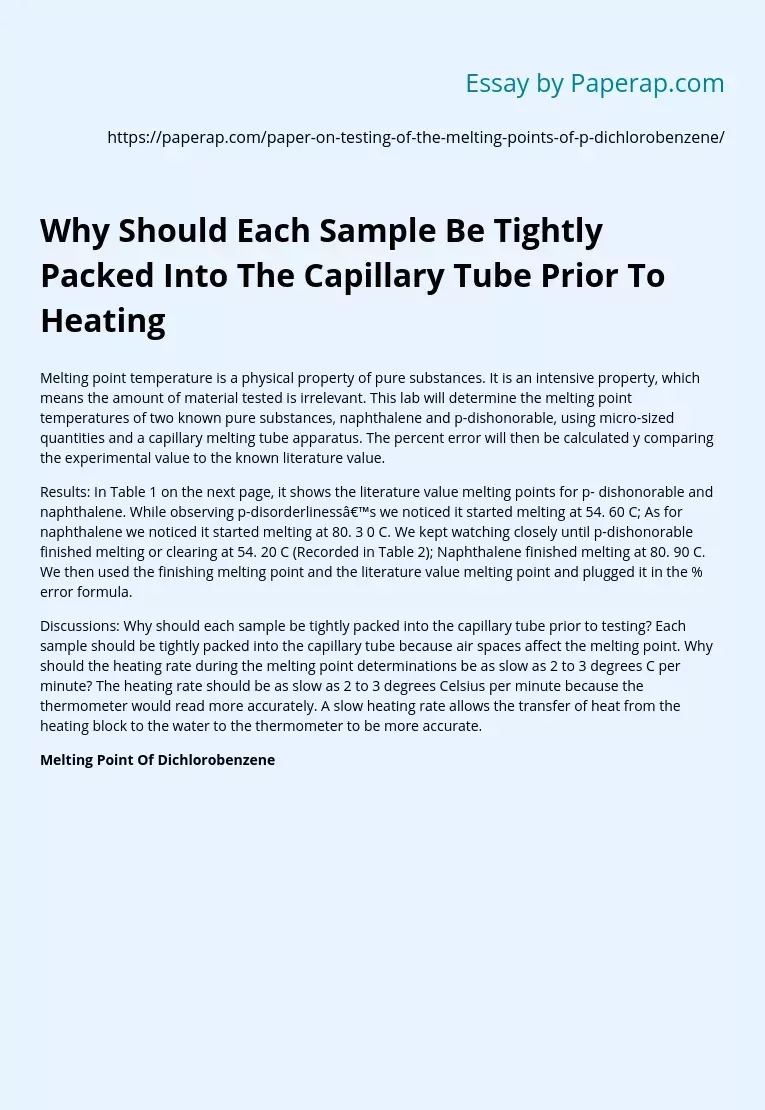Packing Samples for Heating in Capillary Tubes
Melting point temperature is a physical property of pure substances. It is an intensive property, which means the amount of material tested is irrelevant. This lab will determine the melting point temperatures of two known pure substances, naphthalene and p-dishonorable, using micro-sized quantities and a capillary melting tube apparatus. The percent error will then be calculated y comparing the experimental value to the known literature value.
Results: In Table 1 on the next page, it shows the literature value melting points for p- dishonorable and naphthalene.
While observing p-disorderliness’s we noticed it started melting at 54. 60 C; As for naphthalene we noticed it started melting at 80. 3 0 C. We kept watching closely until p-dishonorable finished melting or clearing at 54. 20 C (Recorded in Table 2); Naphthalene finished melting at 80. 90 C. We then used the finishing melting point and the literature value melting point and plugged it in the % error formula.
Discussions: Why should each sample be tightly packed into the capillary tube prior to testing? Each sample should be tightly packed into the capillary tube because air spaces affect the melting point.
Why should the heating rate during the melting point determinations be as slow as 2 to 3 degrees C per minute? The heating rate should be as slow as 2 to 3 degrees Celsius per minute because the thermometer would read more accurately. A slow heating rate allows the transfer of heat from the heating block to the water to the thermometer to be more accurate.
Melting Point Of Dichlorobenzene
Packing Samples for Heating in Capillary Tubes. (2019, Dec 05). Retrieved from https://paperap.com/paper-on-testing-of-the-melting-points-of-p-dichlorobenzene/
